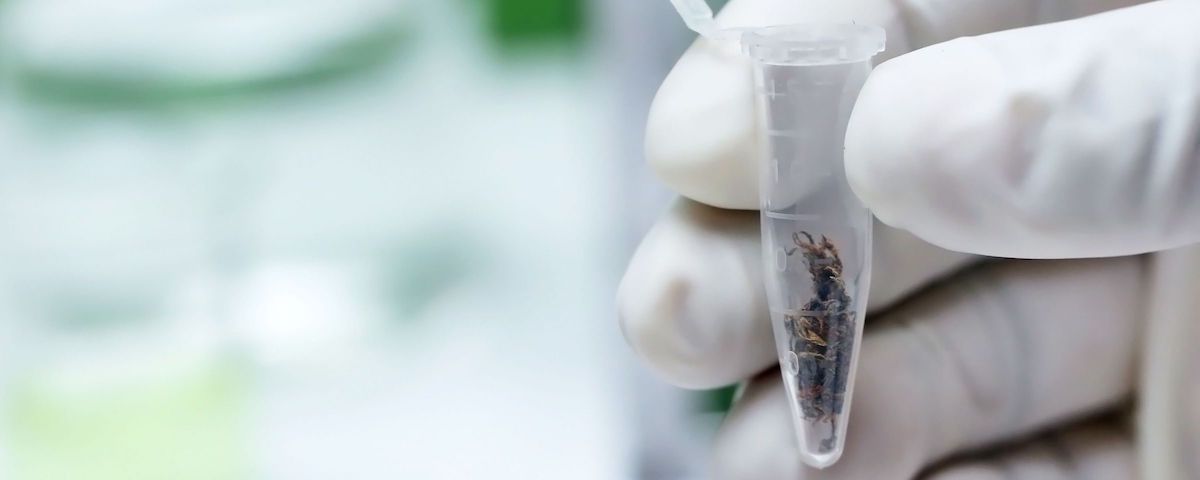

The quality of any Cannabinoid Basic Analysis is dependent, primarily, on the following five factors:
To obtain reliable, conclusive and resilient results for the average content of active substances in plant materials, it is not sufficient to simply analyze approx. 0.3 grams of parts of a plant (e.g. a flower). For the comprehensive and effective analysis of a production batch, we recommend taking a representative sample from your production batch. We are able to process up to 7 grams per individual sample. Larger quantities will be divided and analyzed as several samples.
Before starting an analysis, it is essential to render a plant sample as homogeneous (uniform) as possible, to be able to obtain the most representative part of the sample. We have developed a homogenization process for plant parts at a temperature of -70°C. This way, all components will be included during the homogenization process, since they are unable to settle on the sides of the grinding vessel during the grinding process.
To make sure that all active substances contained in a sample are extracted for analysis to almost 100%, even at low temperatures (< 60°C), we have been optimizing our extraction methods for the various sample material until they have become comparable with the absolute „Gold Standard“ of all extraction methods for plant material (Shoxlett).
Any analyzer system is only as good as its calibration. As one of the basic principles of analytic chemistry states: „A chemist is only able to analyze what he actually has.” This is why the lab management is in possession of a Certificate of Exemption according to §6 Suchtgiftverordnung (Austrian Narcotic Drugs Act) for the circulation and use of narcotic drugs, enabling us to purchase all cannabinoids in high purity form as reference standards. This is why we purchase certified reference material to calibrate our analyzer system from RESTEK Chromatography, Sigma-Aldrich and ECHO Pharmaceutical. On request, we are happy to provide you with the current CoA (Certificates of Analysis) for the reference materials used. Dilution series of these reference substances are, of course, performed using analytical pipettes with a current calibration certificate.
Analysis of cannabinoids requires the coolest possible method of analysis. It is common knowledge that the carboxylic acids (THCA, CBDA und CBGA) change to their respective neutral forms (THC, CBD, CBG) already at temperatures of approx. 100°C. This is why we measure samples by HPLC-DAD at a maximum temperature of 50°C. When testing for cannabinoids, we will NEVER expose your samples to the temperatures usual for gas chromatography (~ 270°C – 320°C) that allow a differentiated statement regarding the analyte concentration of both neutral substances and carboxylic acids.
According to the latest scientific data, therefore, reliable, conclusive and resilient analyses of cannabinoids are always based on these five pillars:
We are strictly working according to these rules to ensure the reliability of our certificates of analysis.
In developing our methods for sample preparation and analysis, we have evaluated many scientific publications. In particular, the articles below have been incorporated into our methods:
Decarboxylation-of-THCA-to-active-THC European Industrial
PDFLeaner and greener analysis of cannabinoids
PDFBioanalytical Method V
PDFCold Extraction Method For Cannabinoids THC And CBD
PDFForensisch chemische Analysen von THC haltigem Hanfkraut
PDFCannabinoid Profile The Endocannabinoid System
Link